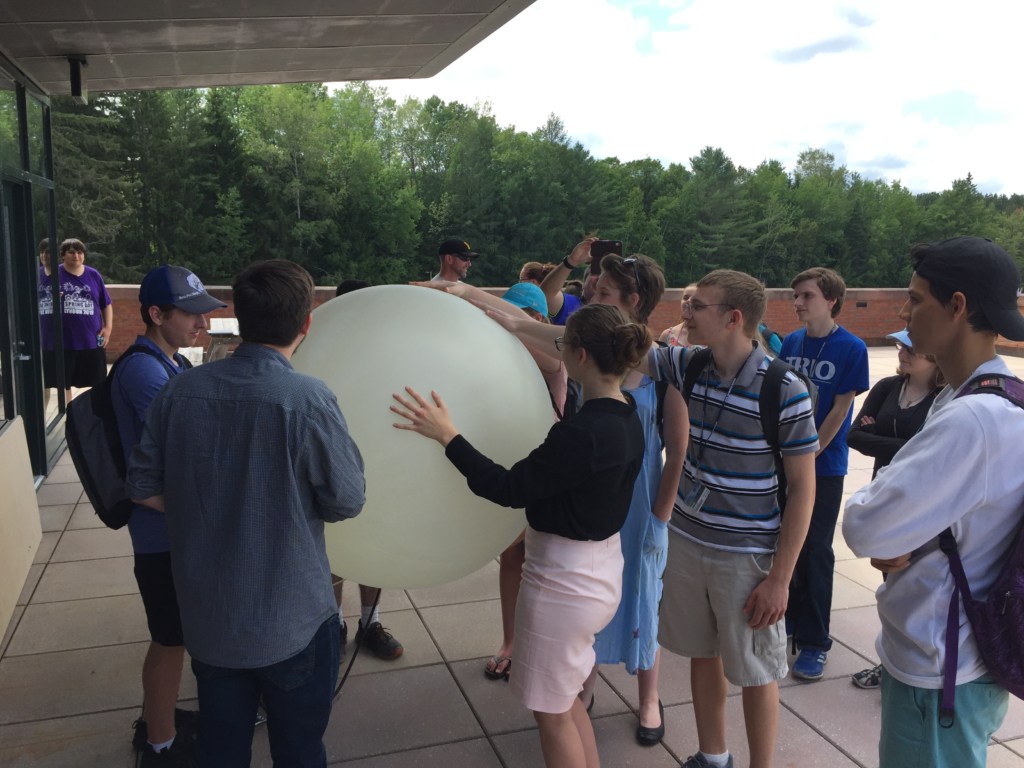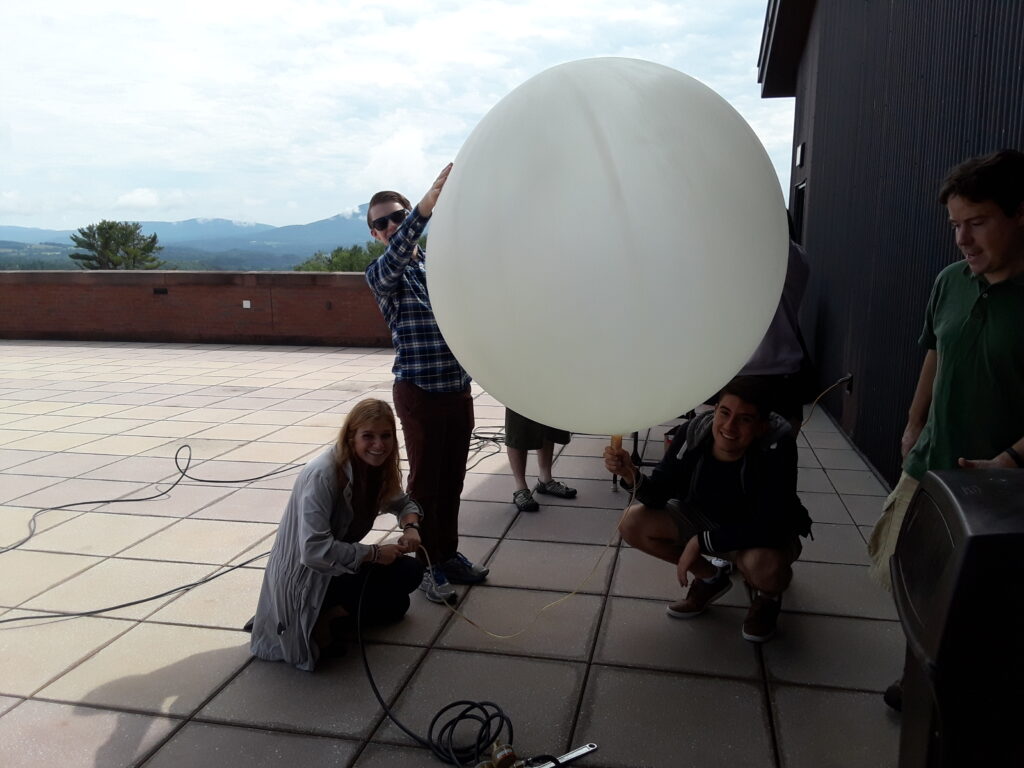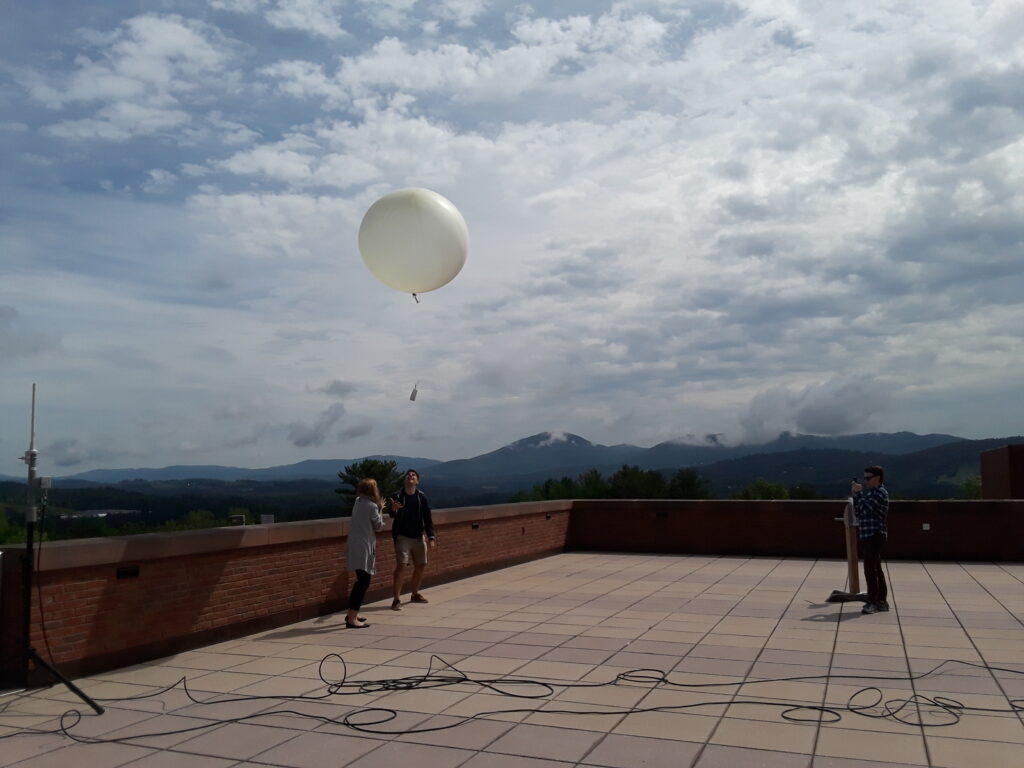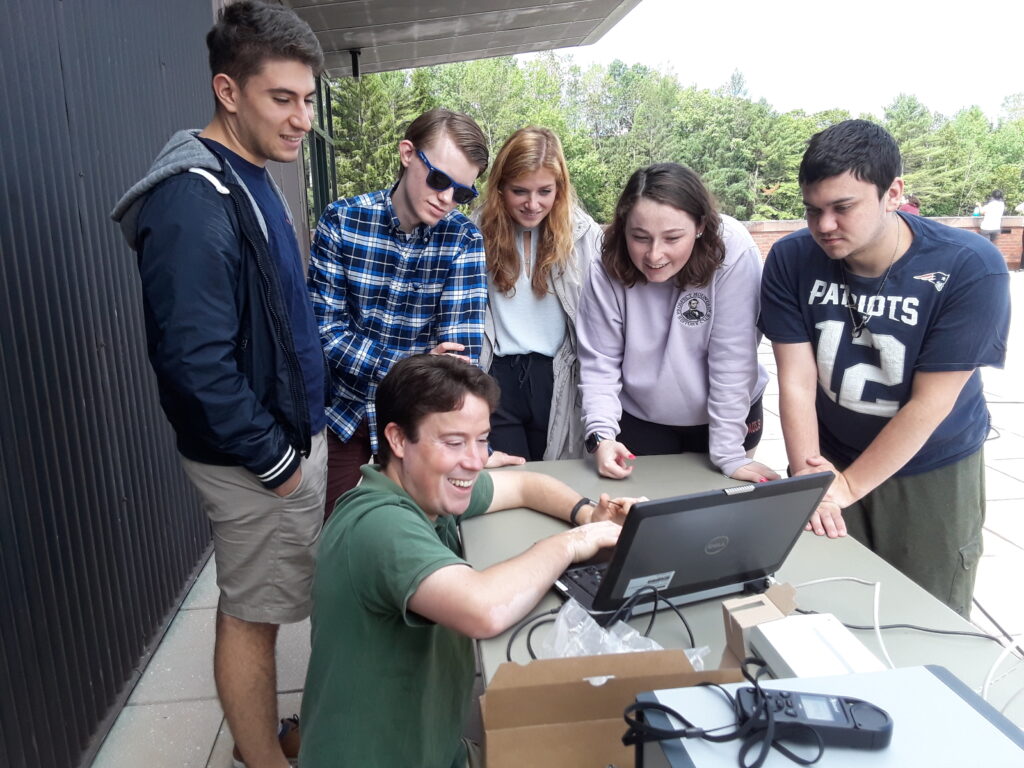Upward Bound and BREE students recently visited the Northern Vermont University-Lyndon Department of Atmospheric Sciences and had the opportunity to launch weather balloons! Students in both of these groups are interested in STEM (Science, Technology, Education, and Mathematics) fields.
About Weather Balloons
Every 12 hours, hundreds of people in places around the world launch huge, white balloons into the sky. The balloons float upward, each tethered to a box of instruments that collects data about the temperature, humidity, and winds in the atmosphere. These are weather balloons. The boxes of instruments are called radiosondes. The data that radiosondes collect is used in weather models to improve weather forecasts. The Department of Atmospheric Sciences at NVU-Lyndon launches weather balloons to gather data during hazardous weather situations (for example, severe thunderstorms, freezing rain, etc.). This data is also used in several Atmospheric Sciences courses. We also welcome the opportunity to launch weather balloons for visitors, like the Upward Bound and BREE students.

Upward Bound students inflate the weather balloon 
Upward Bound students prepare the weather balloon for launch
The Upward Bound program is a national college-preparation program that offers free educational, cultural, and social activities for eligible high school students from low- or modest-income families who will be the first in their family to attend college. The Upward Bound students got a chance to launch a weather balloon. These students are specifically interested in STEM fields and/or attending Northern Vermont University. A couple of students said that Atmospheric Sciences especially interested them.

Upward Bound students get ready to launch the weather balloon
Atmospheric Sciences student and NVU-Lyndon Admissions Student Office Professional Peter Kvietkauskas led a tour of the NVU-Lyndon campus, including stopping by the News7 studio. Dr. Hanrahan and Dr. Preston then talked with the students about the Climate Change Science and Atmospheric Sciences degrees, as well as describing experiential learning opportunities and storm observation field experience that Atmospheric Sciences students have.
Three undergraduate students, Ann Marie Matheny from Indiana University Bloomington, Connor Zwonik from the University of Vermont, and Giorgio Sarro from the University of Wisconsin-Milwaukee, recently visited NVU-Lyndon and had a chance to see what goes on in the Department of Atmospheric Sciences. This included launching a weather balloon. As the weather balloon rose, they also discussed the weather data from the radiosonde. These students are working with faculty and graduate students on the transdisciplinary BREE (Lake Champlain Basin Resilience to Extreme Events) research program. These three students are summer interns through the Vermont EPSCoR (Established Program to Stimulate Competitive Research) Center for Workforce Development and Diversity, which works to cultivate and prepare students in science, technology, engineering and math (STEM) fields.

Left to right: Ann Marie Matheny, Connor Zwonik, and Giorgio Sarro prepare to launch a weather balloon 
Ann Marie Matheny and Giorgio Sarro launch the weather balloon

Jason Kaiser shows BREE students (left to right) Giorgio Sarro, Connor Zwonik, Ann Marie Matheny, as well as ATM students Sarah-Ellen Calise and John Drugan, the weather data as the balloon rises
